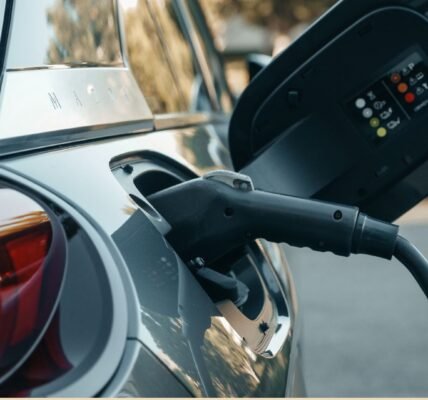The automotive world is undergoing a green revolution. Eco-friendly cars are now more than just a trend. They are the future of driving. With increasing concerns about climate change, car manufacturers are shifting their focus. They are embracing sustainable technology. But what makes eco-friendly cars so special? And how are they leading the charge towards a cleaner planet? Let’s dive into the world of green vehicles and discover how they are transforming the auto industry.
The Rise of Eco-Friendly Cars
Over the past decade, eco-friendly cars have taken the auto market by storm. Consumers are becoming more conscious of their environmental impact. As a result, the demand for green vehicles is skyrocketing. These cars are designed to reduce carbon emissions and save energy. The shift from traditional fuel-powered cars to electric and hybrid models is gaining speed. Brands like Tesla, Nissan, and Toyota are leading the way with innovative eco-friendly options.
The focus on sustainability is no longer a niche market. It’s becoming the standard. Eco-friendly cars are changing the way we think about driving. They offer a blend of performance, efficiency, and low environmental impact.
Electric Vehicles: Powering the Future
Electric vehicles (EVs) are at the forefront of the green car revolution. These cars run entirely on electricity, which means zero emissions. The most popular examples include the Tesla Model 3, Nissan Leaf, and the Chevy Bolt. Electric cars use rechargeable batteries, which can be charged at home or at public charging stations. With improvements in battery technology, EVs can now travel longer distances on a single charge.
The push for electric vehicles is not just about reducing emissions. It’s about creating a cleaner, quieter driving experience. EVs are known for their smooth, silent rides. They also have fewer moving parts, which means less maintenance.
Hybrid Cars: The Best of Both Worlds
Hybrid cars offer a perfect blend of electric and gasoline power. They are designed to switch between fuel and electric modes to optimize efficiency. This makes them a popular choice for those who want to go green without range anxiety. Toyota Prius and Honda Insight are popular hybrid models that deliver great fuel efficiency.
Hybrids are ideal for city driving, where stop-and-go traffic can waste fuel. They also come with regenerative braking, which converts energy lost during braking into electric power. This feature boosts fuel economy and reduces emissions.
Hydrogen Fuel Cell Cars: The New Frontier
While electric and hybrid cars are gaining popularity, hydrogen fuel cell cars are emerging as the next big thing. These cars use hydrogen gas to produce electricity. The only byproduct is water vapor, making them one of the cleanest options available. Brands like Toyota Mirai and Hyundai Nexo are leading the hydrogen revolution.
Hydrogen fuel cell cars offer longer driving ranges compared to traditional EVs. They can be refueled in just a few minutes, similar to gasoline cars. This technology is still in its early stages, but it holds great promise for a zero-emission future.
Sustainable Materials in Car Manufacturing
Eco-friendly cars are not just about what powers them. Car manufacturers are also focusing on sustainable materials. For example, BMW uses recycled plastics and natural fibers in its interiors. Meanwhile, Tesla uses vegan leather for its seats. These materials reduce the environmental impact of car production.
Furthermore, companies are exploring biodegradable and recyclable materials. This shift towards sustainability is making cars greener from the inside out.
The Role of AI in Eco-Friendly Cars
Artificial Intelligence (AI) is playing a major role in making cars more eco-friendly. AI systems optimize driving patterns to save fuel. They also help with route planning to reduce energy consumption. For instance, Tesla’s Autopilot uses AI to improve driving efficiency.
AI also powers Advanced Driver Assistance Systems (ADAS), which helps in reducing traffic congestion. These systems are designed to prevent accidents and improve fuel efficiency by optimizing driving behavior.
Charging Infrastructure: Supporting the Green Shift
One of the main challenges facing eco-friendly cars is the charging infrastructure. However, governments and private companies are investing heavily in expanding charging networks. Fast-charging stations are now popping up everywhere. These stations can charge an electric car in under 30 minutes.
Countries like Norway and Netherlands are leading the charge with extensive charging networks. This expansion is making it easier for consumers to make the switch to electric vehicles.
Government Policies: Driving the Green Revolution
Governments around the world are encouraging the adoption of eco-friendly cars. They are offering incentives like tax breaks, subsidies, and free parking for electric vehicle owners. For instance, California plans to ban the sale of new gasoline-powered cars by 2035. These policies are accelerating the shift towards a greener auto industry.
Moreover, cities are implementing low-emission zones. These areas restrict access to high-polluting vehicles. The goal is to reduce air pollution and promote sustainable transport.
Challenges Facing Eco-Friendly Cars
Despite their benefits, eco-friendly cars face some challenges. The high cost of electric vehicles is a major barrier for many consumers. However, prices are dropping as technology advances. Battery disposal is another concern. Electric car batteries can be harmful to the environment if not properly disposed of.
Infrastructure for hydrogen fuel cell cars is also limited. But with continued investment, these issues are likely to be resolved in the coming years.
The Future of Eco-Friendly Cars
The future of driving is green. As technology evolves, eco-friendly cars will become even more efficient and accessible. Self-driving electric cars, solar-powered vehicles, and even flying cars could be part of our future. The focus will be on reducing the carbon footprint and making transportation sustainable.
Car manufacturers are racing to develop the next generation of green vehicles. This competition is driving innovation and making eco-friendly options more appealing to consumers.
Conclusion
Eco-friendly cars are leading the charge towards a greener future. They are not just a passing trend. They are here to stay. The focus on sustainability is reshaping the auto industry. Electric vehicles, hybrids, and hydrogen fuel cell cars are paving the way. The journey towards a cleaner, greener future is accelerating. So, buckle up and get ready for the green revolution on wheels.





